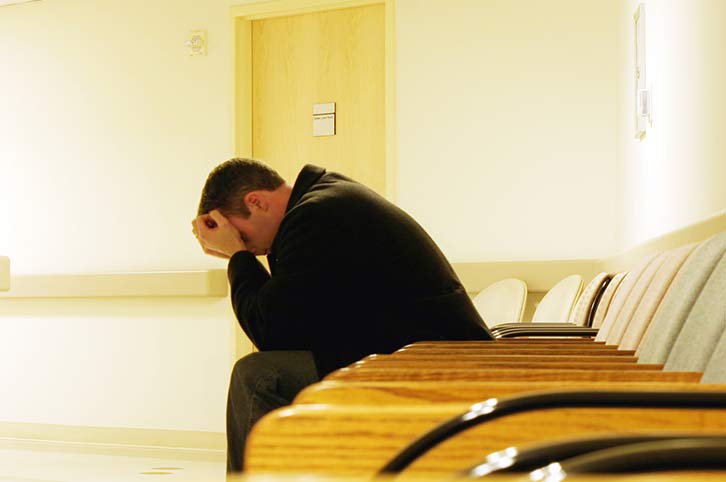By Kim Corts, MSW, LISW
 |
A Case Study |
 |
Help for Couples |
 |
Conclusion |
A Case Study
“Laura is so focused on getting pregnant. It’s all she ever talks about. I keep telling her that we just need more time but she gets so upset with me when I try to talk to her about it.”
After four years of marriage, Mike and Laura had decided it was time to have a baby. But after several months of trying to conceive, they still had not become pregnant. Laura’s doctor advised her to return if they had not conceived after six more months. When the six months passed, Laura’s doctor referred her and Mike to a fertility specialist.
Laura underwent blood tests and other procedures to rule out any disorders of her reproductive system. Mike was asked to give a sperm sample at the clinic to evaluate the number and motility (or movement) of his sperm.
The couple was given a chart to monitor Laura’s basal body temperature each morning which indicates when a woman is ovulating and is fertile. She was also asked to chart the times when the couple had sex and the days of her menstrual cycle. The couple also received information about the reproductive process and ideal times for conception. In addition, the doctor discussed possible courses of treatment.
Initially, the doctor would give Laura a prescription for oral medication to increase her ovulation regularity. If after a few trials that didn’t work, they would then try injections. Mike and Laura would be trained to administer the injections at home to increase the timeliness of the doses.
The next step would be intrauterine insemination during which they would monitor the size and number of Laura’s mature eggs and inject Mike’s sperm into Laura’s uterus at the most opportune time.
Finally, in vitro fertilization would be considered if the previous treatments were not successful. While both Mike and Laura agreed it was good to know the course of treatment, it was overwhelming and somewhat discouraging to have their dreams for a baby turning into a science experiment. The costs for each procedure and the doctor visits were also daunting as their insurance only offered limited coverage for infertility.
Since Laura was taking her temperature on a daily basis and keeping up with the charting, her desire to become pregnant was on her mind constantly. She became more emotional about the infertility, fearing they would never have a baby. Mike, on the other hand, was confident that the pregnancy would happen. They just needed to follow the doctor’s instructions and give themselves some time.
He became frustrated with Laura’s attitude. Laura began to feel more and more hopeless and was upset that Mike didn’t seem to care. The two found it easier not to talk about it since it always seemed to lead to an argument. They were also finding it difficult to have sex at the “right” times as that was becoming another reminder of their problems.
Help for Couples
Mike and Laura realized their relationship was strained and sought help from a Clinical Social Worker who provided marital counseling for the couple. Interventions focused on communication and coping skills with the goal of strengthening the couple’s ability to meet challenges and problem-solve as a team.
- Communication — Mike and Laura were able to identify that they had stopped communicating effectively. The social worker suggested that Laura might want to try writing her thoughts and feelings in a journal rather than relying on Mike to hear them out all of the time. When Mike and Laura did talk, the journaling helped her to talk for shorter periods of time but with more focus. Mike was reminded to limit suggestions and increase statements such as, “I didn’t know you felt that way”, “It sounds like this is really upsetting you”, “Is there anything I can do that would help you?”
- Education — Mike and Laura were encouraged to do some research on their own about infertility and their options. One resource the social worker suggested was www.resolve.org. RESOLVE is a national infertility organization. The Web site includes a great deal of information and resources for couples.
- Rest/Relaxation — Mike and Laura came up with a couple of ideas to help them increase their ability to relax. They both agreed to break from the treatments every three months. They also reframed their current childless state as an opportunity to be spontaneous and indulge in activities they might have difficulty doing with children.
- Romance — Mike and Laura arranged for “date nights” and even took a couple of weekend trips for an additional break. They began to enjoy each other more as they concentrated on the love they shared and what drew them together initially. This also helped both of them to focus on the present rather than worrying about the future.
- Support groups — Mike and Laura were encouraged by their social worker to get involved in a support group for infertility. These groups can be a great place to hear from others who are experiencing similar struggles, gain support and strength from them, and normalize your own array of feelings about infertility. The social worker provided them with a list of area resources.
Conclusion
Infertility is rarely anticipated in couples when they first begin planning for a family; however, 10 percent of couples will experience some difficulty conceiving. Mike and Laura experienced very typical reactions and fears for couples undergoing fertility procedures. While the initial stress and disappointment adversely affected their relationship, Mike and Laura found ways to maintain their relationship. The social worker was able to assist them in coping positively with their infertility and in growing closer as a couple.




